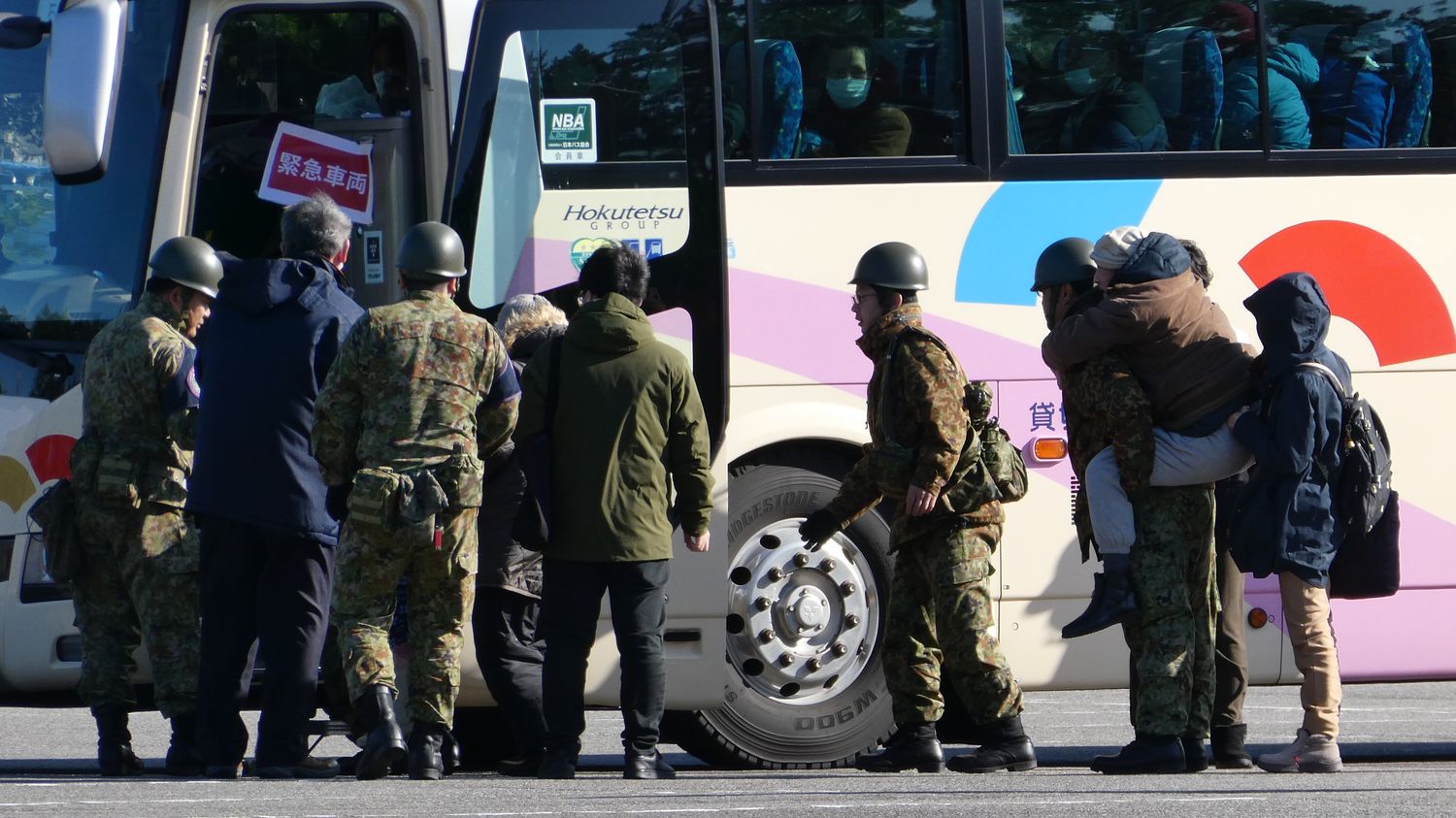Published
Reading time: 2 min

The situation is still critical in Japan ten days after the earthquakes and tsunami which hit the Noto Peninsula. In Suzu, one of the worst-affected cities, the survivors, mostly elderly people, live in very difficult conditions.
More than ten days after the earthquakes and tsunami which devastated west-central Japan, particularly the Noto Peninsula, on January 1, 2024, the toll is now 215 dead and around thirty missing. But for the survivors, often elderly, living conditions are extremely difficult. Impassable roads, rain, snow, cold and difficulties in delivering aid make crisis management very complex.
At the Ishikawa Sports Center, an army helicopter lands in the parking lot. Survivors of the earthquakes north of the Noto peninsula emerge. Norimitsu Funamoto arrived the day before by car. This salt field operator in Suzu, one of the worst-affected towns, lost everything. “90% of the city is ransacked. Around me several people were trapped. Out of five neighbors trapped under the rubble, only one body was pulled out”he laments.

Norimitsu Funamoto joined a first shelter but experienced a hellish week. “There was no drinking water, no running water, no electricity, no mobile network or landline telephone. We had no information. We drank rainwater”says the man.
Koichiro Machi, a member of the NGO Peace Winds, is still in Suzu. “Many shelters are not equipped. The circulation of viruses is increasing. It is the countryside, far from a big city, with a very high proportion of elderly people. It is therefore very complicated”he warns.
“The Noto peninsula has very vulnerable access routes and has many municipalities where more than 50% of the population is elderly.”
Hiroshi Hase, governor of Ishikawaat franceinfo
Japan is, however, experienced with natural disasters, but prevention has been insufficient and the delivery of aid is a major problem. “We should not compare this earthquake too much with other past disasters,” replies the governor of Ishikawa, Hiroshi Hase.

There is a meeting every day in the crisis unit in the departmental capital. Firefighters, police, army, representatives of ministries, each party reports the actions carried out. The mayors of the affected towns now fear numerous deaths among elderly people who do not want to leave their homes, which have become uninhabitable.

“I understand the concerns, but the police patrol around unoccupied houses. They check that thieves or intruders do not enter them. If the residents do not evacuate not, deaths indirectly linked to earthquakes will increase”explains the governor, Hiroshi Hase. This phenomenon of fatal degradation of living conditions sometimes causes more victims afterwards than the earthquakes themselves.
